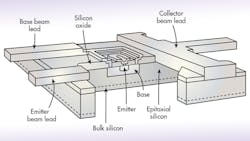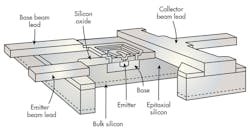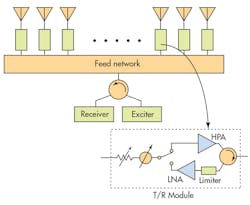The Evolution of Microwave and MM-Wave CMOS ICs
So far, demand for millimeter-wave electronics in commercial or consumer markets isn’t strong. However, if the cost structure for such devices became less restrictive, it may pave the way to countless applications. Millimeter-wave CMOS—with a high degree of integration at low costs—could be a potential enabler for these technologies. Postulating that different circuit approaches other than RF-CMOS are necessary to develop millimeter-wave CMOS, Asad A. Abidi of the Electrical Engineering Department of the University of California, Los Angeles, presented research on the progression of millimeter-wave CMOS development since the 1970s.
Since World War II, the military has shown interest in millimeter-wave technology for electronic warfare (EW). But reliable devices that could produce millimeter waves weren’t feasible until decades afterward. As part of a military grant, Texas Instruments developed silicon-based modules for phased-array radars in 1964. This spurred the development of hybrid integrated circuits (HICs), but they suffered from significant interconnect parasitics above 10 GHz. After years of further research, HICs gave way to monolithic microwave integrated circuits (MMICs).
The first real MMIC—the hybrid semiconductor—exploited gallium arsenide (GaAs), with the justification that higher-electron-mobility devices would have a higher maximum operating frequency. Techniques for developing interstage matching elements between field-effect transistors (FETs) were first performed with GaAs ICs and later implemented in CMOS MMICs. Here, researchers carefully detailed transistor placement and use of low-inductance interconnects. This provided fertile ground for the advancement of silicon-based, millimeter-wave MMIC technologies.
Phased-array technologies with beam-steering capability continue to be a major application for millimeter-wave CMOS, driving the development of highly integrated millimeter-wave transistors. These applications may lead to reduced costs and the greater adoption of CMOS MMICs for radar, backhaul, 5G, and gigabit Wi-Fi. See “CMOS Microwave And Millimeter-Wave ICs: The Historical Background,” 2014 IEEE International Symposium on Radio-Frequency Integration Technology (RFIT), Aug. 2014, pg. 1-5.
About the Author
Jean-Jacques DeLisle
Jean-Jacques graduated from the Rochester Institute of Technology, where he completed his Master of Science in Electrical Engineering. In his studies, Jean-Jacques focused on Control Systems Design, Mixed-Signal IC Design, and RF Design. His research focus was in smart-sensor platform design for RF connector applications for the telecommunications industry. During his research, Jean-Jacques developed a passion for the field of RF/microwaves and expanded his knowledge by doing R&D for the telecommunications industry.


